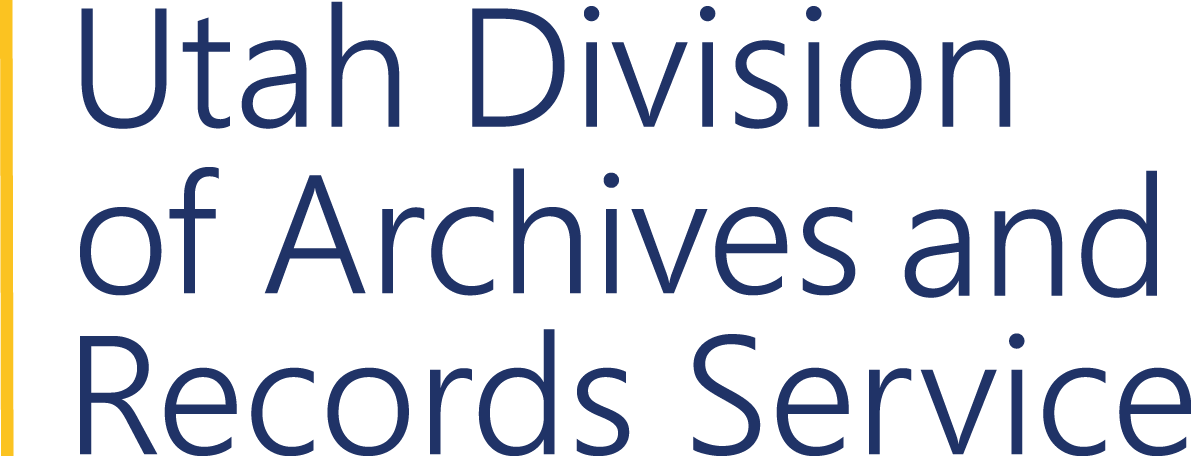DUGWAY MINING DISTRICT (UTAH). RECORDER
Agency History #3134
CREATION
Miners in the Dugway Mountains of Tooele County organized the Dugway Mining District in February 1872. According to established precedent, which was validated when Congress passed a federal mining law later that year, mineral deposits in the public domain were free and open to exploration, and locators of the same had exclusive right of possession. (See Statutes at Large, Treaties, and Proclamations, of the United States of America, vol. 17, 1872, chap. 152). Silver and lead were mined in the Dugway Mountains in the 1870s, but mining in the district was handicapped by lack of water and the remoteness of the area. Miners were forced to haul ore great distances through the desert to the nearest railroad.
Difficulties forced miners to reorganize the Dugway District several times after its original organization in February 1872. In November of the same year, miners reorganized because the district recorder had departed, apparently taking all records with him. Miners reorganized the district for the second time in January 1876 because the district had lapsed into a disorganized state and had been completely evacuated by claim owners. Mining activity lapsed more permanently in 1877. Miners reorganized the Dugway District again in February 1891. The development of the cyanide process enhanced the profitability of gold mining in the area. In 1896 Dugway miners extended the boundaries of the district to include Granite Peak, which is currently part of the Dugway Proving Grounds. The following year the Utah Legislature enacted a mining law which transferred responsibility for keeping mining records to county recorders (Laws of Utah, 1897, chapter 36).
FUNCTIONS
Miners in local districts adopted by-laws to regulate mining activity within the district and elected recorders to keep records of claims. As originally established, Dugway Mining District by-laws limited each claim to 200 feet along a lode with an extra 200 feet for the person who made initial discovery. Claims were recorded within ten days of discovery in a substantially bound book which was not to be removed from the boundaries of the district. The recorder described all claims in terms of a substantial landmark which could be either natural or artificial. Twenty-five dollars worth of annual assessment labor would hold a claim. When they reorganized the district in 1876, miners made adjustments to accommodate federal guidelines. Claims could be up to 15,000 feet, and $100 worth of assessment labor was required to hold a claim. Claim holders had up to thirty days to have claims recorded.
ADMINISTRATION
Dugway Mining District recorders were elected for one year terms at miners' meetings. Only active claim holders were allowed to vote.
Dugway mining district recorders appointed deputies to assist them. In 1897 Utah Legislature enacted a mining law which transferred responsibility for keeping mining records to county recorders (Laws of Utah, 1897, chapter 36).
| DISTRICT RECORDERS | |
| J.B. Irvin | 1872, Feb- |
| J.L. Hardin | 1872, Nov- |
| J.L. Hardin | 1876, Jan-Dec |
| R.S. Payne | 1877, Jan- |
| James J. Gilson | 1891, Feb-1892, Mar |
| G.E. Scamman | 1892, Mar-1893, Mar |
| Phillip B. Boyle | 1893, Mar- Dec |
| S. H. Gilson | 1894, May-1895, Dec |
| Dan Egan | 1896, Jan-1897, Apr |
COMPILED BY: Rosemary Cundiff , September 2002
SOURCES
Blanthorn, Ouida. A History of Tooele County. Utah Historical Society, 1998.
Dugway Mining District (Utah). Recorder. Mining records. Utah State Archives (Series 24159).
Laws of Utah, 1897, Chapter 36. Utah State Archives (Series 83155).
Statutes at Large, Treaties, and Proclamations, of the United States of America, vol. 17, chap. 152. Published by authority of Congress, Boston: Brown, Little and Company.
United States. General Land Office. Mining District By-laws. Utah State Archives (Series 3651).
Page Last Updated July 2, 2003.
